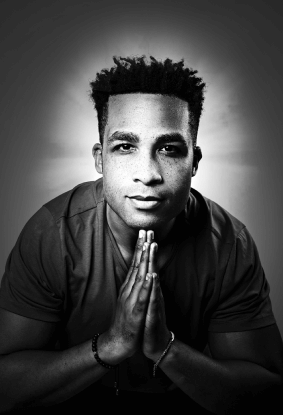Introduction

In recent decades, the world has witnessed a staggering rise in mental health issues. According to global health organizations, over one billion people are currently living with some form of mental disorder, including anxiety, depression, and mood disorders. Despite the rapid advancements in therapy, medication, and psychology, mental health problems are reaching epidemic levels. The question we must ask ourselves is: why?
Traditional mental health models have made significant strides in providing support and relief for individuals facing mental health challenges. Approaches such as cognitive behavioral therapy, mindfulness exercises, and pharmacological interventions have proven effective in alleviating symptoms and reducing immediate distress. However, these methods often focus primarily on symptom management, which, while beneficial, may not fully address the deeper issues that contribute to mental suffering. By exploring the underlying causes and integrating a holistic understanding of the mind, body, and spirit, we can pave the way for more comprehensive healing that promotes lasting peace and well-being.
A Call for a Revolutionary Paradigm Shift: Introducing "Wholeness of Being"
In this article, I will posit that what is needed is a paradigm shift—a revolutionary approach to mental health that seeks to go beyond symptom alleviation and instead aims for the total integration of the self. The concept of Wholeness of Being represents the ultimate evolution in our understanding of mental, emotional, and spiritual well-being. It calls for the integration of the mind, body, and spirit, transcending the traditional boundaries of psychology, psychiatry, and spiritual practice.
Rather than treating the mind as a fragmented component of human existence, Wholeness of Being emphasizes the importance of viewing the individual as a complete, interconnected entity. Mental suffering is not merely a malfunction of the brain or an issue of maladaptive thinking. It stems from a deeper disconnection within the self—a disintegration of the conscious mind from the unconscious, the physical from the spiritual.
Why Now? The Crisis Demands a New Solution
As mental health issues continue to surge globally, it is clear that we are at a critical juncture. Traditional methods have reached their limits, and society is hungry for new solutions. This is where Wholeness of Being steps in. By integrating ancient spiritual wisdom with cutting-edge science, it offers the most comprehensive model for understanding and treating mental health—not as a set of disorders to be managed, but as a pathway toward true personal fulfillment and collective evolution.
The road to achieving Wholeness of Being begins by recognizing that the disconnection between our conscious and unconscious selves is at the heart of our suffering. What lies ahead in this article is an exploration of how this new framework can not only heal individuals but revolutionize the way we think about mental health on a global scale.
Understanding the Current Paradigm: The Modern Approach to Mental Health
For centuries, human beings have sought to understand the workings of the mind. From ancient Greek philosophers like Hippocrates and Plato to modern pioneers such as Sigmund Freud and Carl Jung, the journey to decipher the mysteries of the human psyche has been long and complex. Today, modern psychology and psychiatry are built on a foundation that seeks to diagnose and treat mental illness using scientific methods grounded in observable data, clinical trials, and neurobiological evidence.
The 20th century saw rapid advancements in mental health treatment, particularly with the advent of psychoanalysis, cognitive-behavioral therapy (CBT), and various pharmacological treatments. CBT, for example, has become one of the most widely used therapeutic models in the world, focusing on altering dysfunctional thought patterns to reduce emotional distress. Similarly, medications like antidepressants and antipsychotics have helped millions manage the symptoms of mental disorders.
A Fragmented Approach to Mental Health
While these advancements have undoubtedly improved many lives, they often take a narrow view of mental health, focusing primarily on the mind and brain. Mental health, according to these models, is often seen as the process of managing symptoms, reducing stress, and improving mood regulation. This focus on “fixing” mental disturbances through cognitive or pharmacological means reflects the belief that mental health issues can be reduced to brain chemistry or faulty thought patterns.
However, these approaches, as effective as they can be, often miss the larger picture. Mental health has come to be viewed as a problem of the mind alone, with less attention paid to the spiritual, emotional, and bodily dimensions of the human experience. In this way, the mind has been compartmentalized, its disturbances treated in isolation from the rest of the person.
This fragmented approach often leads to temporary relief, but rarely lasting peace or transformation. Many who suffer from mental illness experience recurring symptoms even after years of therapy or medication. This cyclical experience of partial healing reflects a larger issue: we are addressing only a fraction of the self. When mental health is treated only as a “brain problem,” we neglect the deeper layers of existence that influence well-being—the emotional body, the unconscious mind, and the spiritual core.
The Limitations of Traditional Models
The limitations of the modern mental health paradigm become even more apparent when we consider the rising rates of mental health disorders. According to recent studies, approximately one in five adults worldwide experience mental illness every year, with depression and anxiety leading the charge. The methods we rely on to manage these conditions are undeniably helpful, but they often fall short of addressing the root causes.
One significant limitation is the focus on symptom management rather than holistic healing. In many cases, patients are given coping strategies or medication that alleviates distress in the short term but doesn’t provide a path to true emotional and psychological integration. The goal, it seems, is to return the person to “functionality” rather than to lead them to an understanding of their deeper self.
Another limitation is the over-reliance on pharmacological solutions. Medications like antidepressants can indeed be life-saving, but they are often viewed as the primary solution rather than one tool among many. In some cases, these medications dampen symptoms but fail to resolve the internal conflicts that contribute to those symptoms in the first place. This reductionist view of mental health as a purely chemical imbalance ignores the more subtle and profound aspects of human suffering.
The Missing Piece: Spiritual and Emotional Integration
In contrast to this compartmentalized view, the Wholeness of Being model recognizes that mental health issues are not simply malfunctions of the brain or mind. Instead, they are often symptoms of a deeper disconnection within the self—between the conscious and unconscious mind, between the body and spirit, and between the individual and the greater collective consciousness.
This model proposes that mental suffering stems from a lack of integration. When the different aspects of our being—our emotions, thoughts, physical sensations, and spiritual awareness—are not in harmony, we experience distress. It is not enough to simply “manage” our symptoms; we must seek to reunite the fragmented parts of ourselves into a coherent whole. This is where ancient wisdom and spiritual traditions offer profound insights, filling the gaps left by modern psychology.
Ancient Wisdom and the Forgotten Dimensions of Healing
Before the rise of modern psychology, ancient spiritual traditions provided comprehensive frameworks for understanding human suffering. Eastern philosophies, such as Buddhism, Taoism, and Hinduism, spoke of the mind and spirit as intimately connected and emphasized practices that foster inner peace and unity. In these traditions, mental distress was often seen as a symptom of the ego’s disconnection from the deeper self, and practices like meditation, yoga, and mindfulness were designed to restore that connection.
In the West, the ancient Greeks and early Christian mystics also emphasized the integration of the whole being, advocating for a balanced life that harmonizes body, mind, and spirit. These traditions recognized that mental disturbances often pointed toward a deeper spiritual yearning or conflict that couldn’t be solved by addressing the mind alone.
The Evolution of Mental Health: A New Paradigm
The Wholeness of Being approach builds on this rich tradition of holistic well-being while integrating the latest findings in neuroscience, psychology, and quantum physics. By acknowledging the importance of spiritual and emotional integration, this model offers a more comprehensive view of mental health.
This new paradigm suggests that true healing is not just the removal of distress but the achievement of wholeness—a state where all aspects of the self are aligned and integrated. By understanding the root causes of our suffering as disconnections within the self, we can move beyond symptom management and toward the complete resolution of mental distress.
The Wholeness of Being model, therefore, acts as a bridge between ancient spiritual wisdom and modern psychological science. It offers a path toward healing that doesn’t merely suppress symptoms but encourages individuals to heal at the deepest levels of their being, leading to lasting transformation and inner peace.
Wholeness of Being: A Holistic Approach to Mental Health
At its core, Wholeness of Being represents a revolutionary shift in how we understand mental health and human well-being. It transcends the fragmented approaches that focus solely on the mind, body, or spirit, proposing instead that all dimensions of the self are inseparably linked. This framework emphasizes the necessity of integrating every aspect of our existence—mental, emotional, physical, and spiritual—to achieve true health, happiness, and fulfillment.
In essence, Wholeness of Being is about complete integration. It seeks to bring harmony between the conscious and unconscious mind, the body and the spirit, and the individual and the collective. This concept challenges the current paradigms that treat mental health as a battle between the conscious mind and its perceived disorders, aiming instead for a deep, transformative healing that reconnects all the fragmented parts of the self into a unified whole.
Traditional Mental Health vs. Wholeness of Being
In traditional mental health models, the focus is often on managing symptoms—whether through cognitive behavioral therapy, psychoanalysis, or medication. These models operate under the assumption that the mind is the primary or sole source of distress, and the goal is to alleviate discomfort by altering thought patterns, suppressing symptoms, or modulating brain chemistry.
However, Wholeness of Being suggests that this approach is incomplete. It does not dismiss the importance of therapy or medication, but it asserts that true healing cannot be achieved without addressing the deeper roots of suffering. These roots lie in the disconnection between different aspects of the self—between the conscious and unconscious mind, between our physical body and emotional experiences, and between our individual sense of self and the greater collective consciousness.
Key Aspects of the Wholeness of Being Model
Integration of Conscious and Unconscious Mind
In the current model of mental health, the focus is largely on the conscious mind—the part that engages with reality through rational thought, analysis, and perception. However, the unconscious mind, which holds our deeper fears, traumas, desires, and archetypal patterns, is often neglected or misunderstood.
Wholeness of Being acknowledges the unconscious mind as an essential part of our mental and emotional health. Instead of merely suppressing negative thoughts or behaviors, this approach encourages individuals to confront and integrate their unconscious selves, bringing buried emotions, beliefs, and traumas to the surface to be processed and healed. This is aligned with Carl Jung’s concept of individuation, where the goal of psychological growth is to integrate the conscious and unconscious aspects of the psyche to achieve wholeness.
Emotional and Spiritual Alignment
Many modern therapeutic models overlook the role of spirituality in mental health. Yet, for centuries, spiritual traditions have taught that human suffering often arises from a disconnection between the material and the spiritual. Wholeness of Being proposes that emotional healing cannot be achieved without attending to the spiritual dimensions of existence.
In this context, spirituality refers not necessarily to religious practices but to a sense of connection to something greater than oneself—whether that be the universe, nature, or a higher state of consciousness. By realigning our emotional and spiritual selves, we can address the deeper existential questions that often underlie mental distress: Who am I; Why am I here?
The Role of the Body in Mental Health
Wholeness of Being also emphasizes the physical body as an integral component of mental and emotional well-being. The connection between the mind and body has been well-documented in both ancient practices (such as yoga and qigong) and modern research, which shows that mental stress can manifest in physical symptoms, and vice versa.
In this model, physical practices like mindful movement, breathwork, and somatic healing play a vital role in achieving wholeness. The body holds on to trauma and stress, and it is only through recognizing and releasing these physical manifestations that true healing can occur.
Reconnecting the Individual with the Collective
One of the most profound insights of Wholeness of Being is the idea that mental health is not just a personal issue but a collective one. Our individual suffering is deeply intertwined with the collective human experience, and by healing ourselves, we also contribute to the healing of the greater whole.
The disconnection we experience on a personal level—between our conscious and unconscious, our mind and body—is often reflected in society at large. Wholeness of Being encourages individuals to recognize their interconnectedness with the world around them, and to understand that healing the self and healing society are part of the same process.
The Path to Wholeness: Confronting the Shadow
One of the central tenets of Wholeness of Being is the concept of confronting and integrating the shadow self. In the Jungian sense, the shadow refers to those parts of ourselves that we repress, deny, or avoid—often because they are painful, shameful, or uncomfortable to acknowledge. Yet, it is precisely these shadow aspects that hold the key to our healing.
The traditional mental health approach may inadvertently lead to the suppression of negative emotions, the use of medication to alleviate distress, or the avoidance of confronting deeper traumas. In contrast, Wholeness of Being advocates for deep self-confrontation. It is only by bringing our shadow aspects into the light—fully feeling and processing the pain, fear, and trauma we carry—that we can integrate them and move toward true wholeness.
This process can be difficult and complex, which is why it is often avoided or misunderstood in conventional treatments. However, as ancient spiritual traditions have long taught, true transformation occurs only when we face and transcend our deepest fears and pains. Through practices such as mindfulness, meditation, journaling, and guided therapy, individuals can explore the depths of their unconscious and integrate their shadow selves, paving the way for complete transformation.
The End Goal: A State of Wholeness
The ultimate goal of Wholeness of Being is not simply to alleviate symptoms or reduce suffering but to achieve a state of complete harmony between all aspects of the self. This means:
The mind and body are in alignment, free from the physical manifestations of emotional stress.
The conscious and unconscious are fully integrated, with no suppressed emotions, thoughts, or desires lurking in the background.
The individual and the collective are in harmony, with the individual recognizing their place in the greater web of existence.
The spiritual and emotional aspects of the self are unified, with the individual experiencing a deep sense of purpose, peace, and connection to a higher reality.
This state of wholeness is what many spiritual traditions have called enlightenment or self-realization. In the context of mental health, it represents the full and final resolution of internal conflict, the end of suffering, and the beginning of a life lived in peace, joy, and purpose.
Science Meets Spirituality: The Integration of Ancient Wisdom and Modern Neuroscience
The concept of Wholeness of Being is not only grounded in ancient spiritual traditions but also supported by cutting-edge scientific research. As modern neuroscience, psychology, and quantum physics continue to evolve, they increasingly reveal the interconnectedness of mind, body, and spirit. What was once considered “mystical” is now being validated by empirical evidence, opening up new possibilities for how we approach mental health and well-being.
The Role of Consciousness in Healing
One of the most profound insights from both ancient spiritual teachings and modern science is the role of consciousness in healing. In traditional mental health models, consciousness is often reduced to brain function—a byproduct of neuronal activity. However, new research in neuroscience and quantum physics suggests that consciousness is not merely a byproduct of the brain, but a fundamental aspect of reality itself.
Neuroplasticity: One of the key discoveries in modern neuroscience is the concept of neuroplasticity—the brain’s ability to rewire itself in response to experience. This means that the brain is not a fixed, static organ but a dynamic and ever-changing entity capable of healing and transformation. This aligns with the teachings of spiritual traditions, which emphasize the power of consciousness to shape reality. Practices like meditation, mindfulness, and focused attention can physically change the brain, strengthening neural pathways that promote emotional regulation, inner peace, and spiritual awareness.
Mindfulness and Meditation: Decades of research on mindfulness and meditation have shown that these practices can lead to significant changes in brain structure and function. Studies have found that regular meditation increases gray matter in areas of the brain associated with emotional regulation, empathy, and self-awareness. It also reduces the size of the amygdala—the brain’s “fear center”—which plays a key role in anxiety and stress. These findings suggest that the practices central to Wholeness of Being, such as meditation and self-reflection, have tangible effects on the brain’s ability to heal and integrate itself.
The Observer Effect: Quantum physics introduces the concept of the observer effect, which posits that the act of observation can influence the outcome of an event. This idea resonates deeply with spiritual teachings about the power of consciousness. In the Wholeness of Being model, the conscious mind is not just a passive observer of thoughts and emotions but an active participant in shaping reality. By becoming fully aware of one’s internal state, an individual can influence and transform their mental and emotional well-being.
Transpersonal Psychology: Bridging Psychology and Spirituality
In addition to neuroscience, the field of transpersonal psychology offers valuable insights into how spiritual practices and states of consciousness contribute to mental health. Pioneered by figures like Abraham Maslow and Stanislav Grof, transpersonal psychology explores the intersection of psychology and spirituality, with a particular focus on the development of higher states of consciousness and the process of self-actualization.
Self-Actualization: Abraham Maslow’s hierarchy of needs culminates in the concept of self-actualization—the process of realizing one’s full potential. While traditional psychology often focuses on treating mental illness, transpersonal psychology goes beyond this, emphasizing the importance of achieving higher states of awareness and spiritual growth. The Wholeness of Being model builds on this by suggesting that mental health is not just about alleviating suffering but about integrating all aspects of the self to reach a state of complete harmony and self-realization.
The Transcendent Experience: Transpersonal psychology also explores the role of transcendent experiences—moments in which individuals feel a sense of unity with the universe or a higher power. These experiences often lead to profound personal transformation and healing. Research has shown that individuals who undergo such experiences report long-term improvements in mental and emotional well-being, suggesting that spiritual experiences can play a crucial role in mental health. The Wholeness of Being approach encourages individuals to seek these moments of transcendence as part of their healing journey.
Addressing Skepticism: Why This Approach is More Than "Mysticism"
For mental health professionals rooted in traditional scientific frameworks, the Wholeness of Being model may initially seem too abstract or “mystical” to be taken seriously. However, the growing body of evidence from neuroscience, psychology, and quantum physics demonstrates that this approach is not only valid but necessary for a comprehensive understanding of mental health.
Empirical Support for Holistic Healing: The integration of practices like meditation, mindfulness, and somatic healing into mainstream therapeutic models is already happening. These practices, once dismissed as “new age,” are now widely accepted as effective tools for reducing anxiety, depression, and PTSD. The Wholeness of Being model builds on this foundation, offering a more complete and integrated approach that recognizes the importance of emotional, physical, and spiritual health.
The Role of the Unconscious in Mental Health: Carl Jung’s concept of the unconscious provides a bridge between spiritual and psychological frameworks. Jung believed that much of our mental distress arises from repressed or unacknowledged aspects of the unconscious mind. He argued that true healing can only occur when we integrate these unconscious elements into our conscious awareness. This is precisely what the Wholeness of Being model seeks to achieve—by encouraging individuals to confront and integrate their shadow selves, it offers a path to deep and lasting transformation.
Practical Applications for Therapists: For psychologists and therapists, the Wholeness of Being model offers practical tools that can be integrated into existing therapeutic frameworks. Practices like mindfulness-based stress reduction (MBSR), somatic experiencing, and integrative body psychotherapy are already being used successfully to treat trauma, anxiety, and other mental health conditions. By expanding their understanding of mental health to include the spiritual and emotional dimensions of the self, mental health professionals can offer their clients a more holistic and effective approach to healing.
Case Studies: Success Stories from Holistic Mental Health Approaches
To further support the validity of the Wholeness of Being model, we can look at real-world examples where holistic approaches to mental health have led to profound healing. These case studies highlight the importance of integrating the mind, body, and spirit in order to achieve true mental health.
Mindfulness-Based Cognitive Therapy (MBCT): MBCT is a therapeutic approach that combines traditional cognitive therapy with mindfulness practices. It has been shown to be particularly effective in preventing relapse in individuals with chronic depression. By teaching individuals to become aware of their thoughts and feelings without judgment, MBCT helps them break the cycle of negative thinking and develop a greater sense of inner peace.
Somatic Experiencing: Developed by trauma expert Peter Levine, somatic experiencing is a therapeutic approach that focuses on the connection between the mind and body. It helps individuals release the physical tension and trauma stored in the body, leading to emotional healing. This approach aligns with the Wholeness of Being model by recognizing the importance of integrating the physical and emotional dimensions of the self.
Psychedelic-Assisted Therapy: Emerging research into psychedelic-assisted therapy is showing promise for treating a variety of mental health conditions, including PTSD, depression, and addiction. Psychedelics like psilocybin and MDMA have been shown to facilitate profound spiritual experiences and emotional breakthroughs, allowing individuals to confront and integrate their deepest fears and traumas. This approach aligns with the Wholeness of Being model by emphasizing the importance of transcendent experiences in healing.
Implementing Wholeness of Being in Personal and Therapeutic Practices
The concept of Wholeness of Being offers a comprehensive framework for both personal healing and therapeutic practice, one that goes beyond managing symptoms to addressing the deeper layers of human experience. In this section, we will explore how individuals, therapists, and society as a whole can adopt this approach to foster true mental, emotional, and spiritual integration.
- Personal Practices for Achieving Wholeness
For individuals seeking to transform their mental health and well-being, the path to Wholeness of Being begins with self-awareness and integration. Rather than focusing solely on reducing symptoms of anxiety, depression, or stress, individuals are encouraged to approach their mental health holistically—addressing the emotional, physical, and spiritual aspects of their lives in tandem.
- Mindfulness and Meditation: At the core of achieving wholeness is the practice of mindfulness. Mindfulness allows individuals to become aware of their thoughts, emotions, and bodily sensations without judgment. Regular mindfulness meditation helps cultivate a state of presence, where one can observe and integrate all aspects of the self. This practice reduces mental suffering by bringing unconscious patterns to the surface, allowing for deeper emotional healing.
-
- Daily Application: Start with just 10 minutes of mindfulness meditation each day. As the practice deepens, individuals will begin to notice shifts in their emotional states and a greater sense of inner peace.
- Shadow Work and Emotional Integration: One of the most important aspects of the Wholeness of Being model is the process of confronting the shadow self—those parts of ourselves that we suppress, deny, or avoid. Shadow work involves bringing these aspects of the self into conscious awareness, processing the emotions and experiences that have been repressed, and integrating them into the whole self.
- Practical Tip: Journaling is an effective tool for exploring the shadow self. By writing down recurring emotional patterns, fears, or memories that surface, individuals can begin to confront these hidden aspects and release their emotional charge.
- Somatic Practices: The body plays a crucial role in achieving wholeness, as it often stores trauma and unprocessed emotions. Practices like yoga, tai chi, or somatic experiencing allow individuals to release these stored emotions, helping them reconnect with their bodies and achieve emotional and physical harmony.
-
- Practical Tip: Engaging in a regular practice of mindful movement or body-based therapies can help individuals release trauma from the body, improving both mental and physical health.
- Spiritual Alignment: Finally, achieving Wholeness of Being involves a deep spiritual connection. Whether through meditation, prayer, or spending time in nature, cultivating a sense of connection with something greater than oneself is essential to achieving inner peace. This spiritual connection helps individuals move beyond the limitations of the ego, fostering a deeper sense of purpose, joy, and fulfillment.
-
- Practical Tip: Individuals should dedicate time each day to practices that foster spiritual alignment, such as walking in nature, reflecting on existential questions, or practicing gratitude.
- Therapeutic Applications: A New Model for Mental Health Professionals
For mental health professionals, the Wholeness of Being model offers a new framework for treating clients—one that goes beyond symptom management to foster deep, lasting healing. By integrating practices from both traditional psychology and spiritual traditions, therapists can help clients achieve a state of mental and emotional wholeness.
- Mind-Body Integration in Therapy: One of the most profound contributions of the Wholeness of Being model is its emphasis on the mind-body connection. Therapists can incorporate somatic therapies or body-based practices into their work with clients, helping them release stored trauma and reconnect with their physical bodies.
-
- Therapeutic Application: Somatic techniques, such as breathwork or body scanning, can be used to help clients become more aware of physical sensations that may be linked to emotional distress.
- Integrating Shadow Work into Therapy: Traditional talk therapy often focuses on the conscious mind, but the Wholeness of Being model encourages therapists to help clients explore their unconscious as well. By guiding clients through shadow work, therapists can help them confront and integrate their repressed emotions, leading to deeper healing.
-
- Therapeutic Application: Techniques like dream analysis, guided visualization, or depth psychology can be used to explore unconscious patterns and integrate the shadow self into the conscious mind.
- Incorporating Spirituality into Therapy: Many clients are searching for deeper meaning and spiritual connection, yet spirituality is often left out of traditional mental health treatment. The Wholeness of Being model invites therapists to explore the spiritual dimensions of healing with their clients, recognizing that mental and emotional well-being cannot be separated from spiritual fulfillment.
-
- Therapeutic Application: Therapists can introduce practices like meditation, gratitude, or spiritual reflection into therapy sessions, helping clients cultivate a deeper connection to their inner selves and the universe.
- Trauma-Informed Approaches: The Wholeness of Being model is particularly valuable for working with trauma survivors. It recognizes that trauma affects not just the mind, but the body and spirit as well. By adopting a trauma-informed approach, therapists can address the full impact of trauma on their clients’ well-being and help them heal on multiple levels.
-
- Therapeutic Application: Incorporating somatic experiencing, mindfulness, and emotional processing into trauma therapy can help clients release stored trauma from the body and achieve emotional and physical wholeness.
- The Collective Healing of Humanity
The Wholeness of Being model is not only transformative on an individual level but has the potential to bring about collective healing for society as a whole. By fostering greater awareness of the interconnectedness of all beings, this approach can help address the deeper causes of conflict, division, and suffering in the world.
Healing the Collective Trauma: Society is currently experiencing multiple layers of trauma, from the global mental health crisis to environmental degradation and social injustice. The Wholeness of Being model suggests that many of these issues arise from a collective disconnection—from ourselves, from each other, and from the planet. By encouraging individuals and communities to reconnect with their true selves and the collective consciousness, we can begin to heal these deeper wounds.
Global Application: Programs that focus on mindfulness, community healing, and environmental consciousness can help foster greater connection and cooperation among individuals and groups, leading to a more compassionate and harmonious world.
Creating a New Paradigm for Societal Health: By adopting a holistic approach to mental health and well-being, society can begin to shift away from fragmented, individualistic models of success and happiness toward a more integrated, cooperative paradigm. This new approach recognizes that individual health and collective health are inseparably linked and that by healing ourselves, we also contribute to the healing of society.
Practical Tip: Schools, workplaces, and community organizations can implement programs that promote mental, emotional, and spiritual health, helping to create a culture of wholeness and well-being for future generations.
The Global Impact of Wholeness of Being: A New Era of Human Potential
The Wholeness of Being model represents the next stage in human evolution—a new paradigm that integrates ancient spiritual wisdom with modern scientific understanding. By embracing this holistic approach to mental health, we can foster a world where individuals are not only free from suffering but are fully alive, integrated, and connected to their highest potential.
This model has the power to transform not just individual lives but society as a whole, leading to a new era of compassion, unity, and collective healing. As we continue to face global challenges—whether in the form of mental health crises, environmental degradation, or social inequality—the Wholeness of Being model offers a path forward that honors the interconnectedness of all life and invites us to step into our highest potential as a species.
Conclusion: An Invitation to Embrace Wholeness of Being
The journey toward Wholeness of Being is not merely about the alleviation of mental distress; it is about the full integration of all aspects of our existence—mind, body, spirit, and community. In a world increasingly divided by conflict, uncertainty, and suffering, this model offers a transformative pathway to healing. It challenges us to look beyond the surface-level treatments of mental health and to instead embark on a deeper quest for unity within ourselves and with the world around us.
We stand at a pivotal moment in human history. The mental health crisis we face is not an isolated issue but a reflection of a deeper disconnection—from our true selves, from each other, and from the planet. The Wholeness of Being model offers a profound opportunity to shift our understanding of mental health from one of symptom management to one of total integration and enlightenment. This is not just about healing individuals but about healing humanity itself.
A Call to Action
No matter your background or your current understanding of mental health, Wholeness of Being invites you to take part in this revolutionary approach. Whether you are a mental health professional, a spiritual seeker, or someone new to these ideas, the call to action is the same: embrace the journey toward wholeness, and in doing so, contribute to the healing of the world.
For Spiritual Practitioners: This model invites you to deepen your understanding of the self, moving beyond spiritual transcendence toward the integration of mind, body, and spirit. By fully embodying Wholeness of Being, you can guide others on this profound journey, helping to raise the collective consciousness of humanity.
For Mental Health Professionals: Wholeness of Being provides a new framework that complements and enhances your existing tools. By integrating practices like mindfulness, somatic healing, and spiritual alignment into your therapeutic work, you can help your clients achieve lasting healing—not just on a psychological level but at the deepest levels of their being.
For Newcomers to Mental Health and Spirituality: Whether you are just beginning your journey or are seeking new solutions to your mental health challenges, Wholeness of Being offers an accessible and transformative path forward. By embracing this model, you can move beyond temporary fixes and symptom management and embark on a journey toward true peace, happiness, and self-realization.
The Next Step: Moving Beyond the Self to Heal the Collective
As we each strive to achieve Wholeness of Being within ourselves, we also contribute to the healing of the collective. Imagine a world where mental health is not defined by the absence of illness but by the presence of total harmony—where individuals are deeply connected to their true selves, to each other, and to the greater whole.
By embracing this new paradigm, we can begin to address not only personal suffering but the broader societal issues that stem from disconnection—violence, inequality, environmental degradation, and more. Wholeness of Being is not just a personal journey; it is a global movement toward unity, compassion, and collective well-being.
Closing Thought: A New Era of Healing and Human Potential
The journey toward Wholeness of Being is not just a personal endeavor but a collective one. It represents the next stage in human evolution—a world where we no longer seek to manage mental health but to achieve complete integration and fulfillment. As individuals, as communities, and as a species, we are capable of so much more than we have yet realized.
In embracing Wholeness of Being, we open the door to a new era of human potential—one in which we are not defined by our suffering but by our ability to heal, grow, and unite. This is the promise of Wholeness of Being, and it is within our grasp. The time to act is now.










